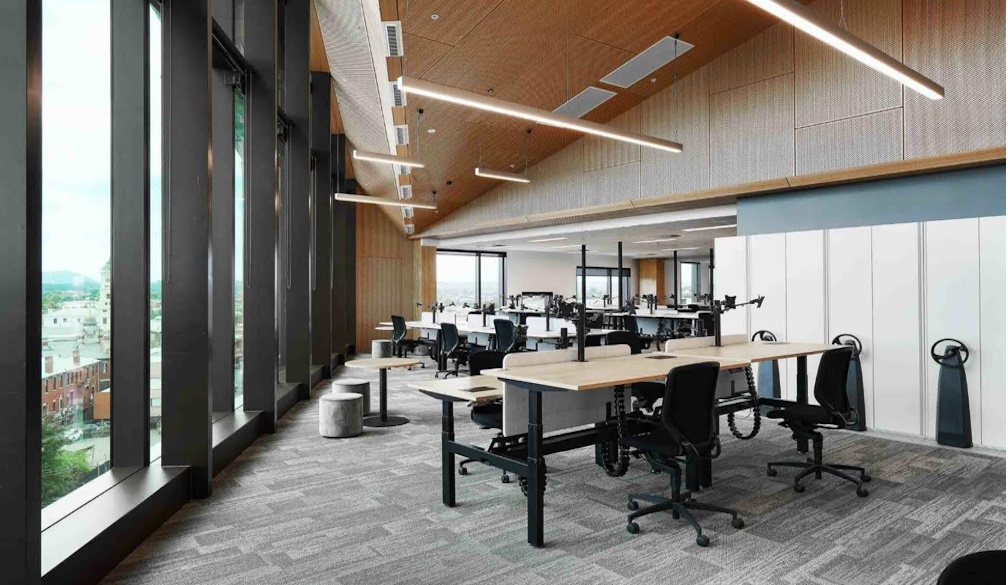The Impact of Office Design on Employee Wellbeing and Productivity

The connection between office layout and productivity
An office environment is more than just a place to work; it sets the tone for how employees engage with their tasks, interact with colleagues, and maintain focus throughout the day. The physical layout, lighting, acoustics, and furniture all contribute to an atmosphere that either supports or hinders efficiency. A well-designed workspace can lead to fewer distractions, better organization, and a greater sense of purpose. Poor design, on the other hand, can make even the most motivated professionals feel disengaged and fatigued.
How ergonomics influence employee wellbeing
Long hours at a desk can take a toll on the body and mind. Ergonomic furniture, such as adjustable chairs and standing desks, helps reduce physical strain while promoting better posture. Proper desk setups prevent back pain and wrist fatigue, leading to fewer sick days and improved overall morale. Additionally, access to natural light and ventilation enhances energy levels and mental clarity. Workspaces that prioritize comfort allow employees to concentrate on their responsibilities without unnecessary discomfort or interruptions.
The role of color psychology in office spaces
Different colors evoke different emotions, and office design should take this into account. Soft blues and greens promote calmness and focus, making them ideal for high-concentration tasks. Warmer tones like oranges and yellows can foster creativity and enthusiasm, particularly in brainstorming areas. By strategically incorporating color into the workspace, businesses can encourage the right mindset for different tasks, ultimately boosting engagement and motivation.
How flexible spaces encourage collaboration and creativity
A rigid office layout can stifle communication and limit teamwork. Dynamic work environments that offer a mix of private spaces and open collaboration areas foster creativity and adaptability. When employees have the freedom to choose where they work based on their tasks—whether in a quiet nook for deep focus or in a shared lounge for discussions—they feel empowered and motivated. This balance of privacy and interaction helps teams function cohesively while still allowing for individual productivity.
Technology integration for smarter work environments
Modern offices are increasingly incorporating technology to streamline workflows and enhance connectivity. Smart lighting systems that adjust based on occupancy, noise-canceling pods for focused work, and virtual meeting rooms improve efficiency while supporting a seamless work experience. As remote and hybrid work models continue to evolve, integrating digital solutions into office design ensures that employees remain connected and engaged regardless of their location.
A strategic approach to office design melbourne considers not just aesthetics but also functionality. Thoughtfully planned workspaces promote physical health, mental clarity, and social interaction, all of which contribute to a more engaged workforce. Employees who feel comfortable and supported in their work environment are more likely to stay motivated and productive. As businesses evolve, investing in design that prioritizes employee needs is essential for long-term success.
To further explore the psychology of workspace environments, studies on the impact of open-plan offices on concentration provide valuable insights into the benefits and drawbacks of different layouts. Understanding these factors helps organizations create spaces that truly enhance employee performance and satisfaction.





